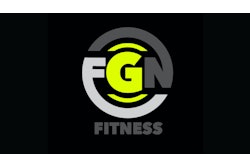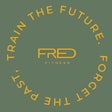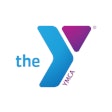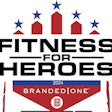Keeping an open mind is the first step toward re-invigorating your group exercise programming.
Keeping group fitness programs exciting is the challenge of every group fitness director and instructor. Fortunately, if you are open to new ideas, formats and equipment, much of the work of keeping your programming fresh is already done for you.
Getting ideas
The best group fitness directors, instructors, personal trainers, etc., meet at fitness conventions to share new ideas, philosophies, music, videos and more. Attend these conferences and keep an open mind. Sara Kooperman-Roth, CEO of SCW Fitness Education (formerly Sara's City Workout), Evanston, Ill., has been in the fitness convention business for more than 18 years. She has learned a few things about what works and what doesn't in both group fitness formatting and group fitness conventions. Her suggestion? When attending conventions, make 70 percent of the classes you take those that you know you will use, such as leadership classes. Make the other 30 percent classes that you never thought you would use, such as belly dancing. Kooperman-Roth advises group fitness instructors to get out of their box and try new things. You shouldn't be afraid to experiment a little in class. Some of the most surprising class formats just might be a new favorite for your fitness center. Take, for example, the master class offered at a recent SCW Fitness MANIA conference based on strip aerobics. "All the presenters … got up there and came up with a sexy workout routine using body bars, medicine balls, whatever," says Kooperman-Roth. People loved it! Another idea for finding out what's new is to visit the websites of other fitness centers, particularly fitness facilities in big cities. See what they are offering that sounds unique, and then think of how you might incorporate that into your programming. A firefighter class, a military boot camp, yoga, sports training - you don't have to think of it first, you just have to be able to incorporate it into your group programming.
Prop it up!
Sometimes adding props can make a difference. Just be careful of safety, and don't put too much together. Petra Kolber, an international fitness presenter (www.petrakolber.com), cautions instructors about using too many props, and reminds that, sometimes, not using props works fine, too. She says props should never take the place of good teaching skills. Just because something is complicated, doesn't mean it is good! "There is a thin line between creativity and confusion," Kolber says. "When I first started teaching, I would change almost everything in my class every week, [and] this actually can lead to frustration, as a big part of motivation is being successful. Now, I add one or two elements into my classes every other week or so. I think students like a mix between what is familiar and being challenged by something new." Of course, some classes, by definition, require a prop, such as Step, group strength and group cycling. When using props, make sure instructors remind their students what the goals of the movements are, why they are performing the movement and what muscles they are working. Help educate members so that they understand the purpose of the exercises. A little knowledge goes a long way toward motivation.
Create and motivate
Creative, safe and educated are three of most important qualities in a group fitness instructor. The other two are inspiring and motivating. You know an inspired instructor when you see one. They are the people who draw others in, not only during class, but before and after class as well. They are the people who are excited by what they do, and who want to share the benefits of fitness with their students. They have great music and a well-practiced routine, and they offer everyone, no matter their fitness level, a chance to shine. They motivate their students to come back time and time again. Kolber finds her inspiration and motivation with music, and her students feel the same. "Whenever I feel stuck creating any type of workout, from sculpt to dance, I put on a wide selection of music that I love and that helps inspire me," she says. "There is something about really listening to the rhythms of great songs that almost tells you how to move and create." Some instructors look to other instructors for inspiration, plus exercise videos, group fitness conferences and television. Teaching something you aren't comfortable teaching is a sure way of making participants uncomfortable, too. If you know that a dance class won't work for an instructor, don't have them teach that type of class. But if you or an instructor had fun with something at a convention, that's a great sign that this format can be something for you to incorporate at your fitness center.
Group trends
Kooperman-Roth and her MANIA convention planning staff stay on top of fitness trends by reading trade journals, seeing which classes and videos sell the best at their conferences, and meticulously going over evaluations of presenters by conference attendees. (In fact, attendees to the SCW Fitness MANIA conventions won't get CEC credit unless they turn in an evaluation.) Three big trends Kooperman-Roth sees at her conventions are sports conditioning for women, medicine ball classes and "fusion" classes. Kolber sees more yoga on the horizon. "However," she says, "I hope implementing the yoga philosophy of non-judgment and self-acceptance, in addition to the movements, comes into the classes. [The best] classes inspire people and motivate them to be the best they can be, versus a size six." Kolber also sees more personal training in a group class format, indoor cycling and, with the advent of dancing-inspired TV shows, more dance formats. Sarah Lurie, owner of Iron Core, La Jolla, Calif., sees Kettlebells as a rising wave in the future of fitness. "Anyone can do it," she says. "No prior fitness level or athletic experience is required. [One] misconception is that you have to be really fit to exercise with Kettlebells. Actually, most of our clients haven't exercised in years." She continues, "Overall, I hope we see classes that appeal to [people's] spirits and hearts, versus just the body. I truly believe movement is a phenomenal tool for improving self-esteem and reducing self-criticism, if [instructors] do their jobs well."
Bringing it home
When you develop a new class for your fitness center, be prepared for people to be leery. After all, if it was out of your comfort zone, it will probably be out of your members', as well. Give members a little while to warm up to the new class. Maybe have instructors show participants a few of the new moves during the classes they currently teach. Says Kolber, "Sometimes there is no rhyme or reason to why one class works and another does not - sometimes it has nothing to do with the class and a lot to do with the time slot. Some classes that I really thought would be a knockout fell flat, and others I was not sure about were big hits. I encourage anyone with a format that they feel passionate about to not give up if it does not work the first time." If it doesn't work, talk to members and find out what they liked and didn't liked about the class. Maybe they liked the idea, but it was too complicated. Maybe it was too "dancey," and they felt uncoordinated. Maybe they like what they take now, and they don't want to change anything. By talking to your clientele, you'll find out how you can best serve them and their needs. Don't forget about the importance of marketing. Also, make sure instructors have a music selection that is appropriate to their students' ages and preferences. Finally, all fitness professionals need to remember that their role is to not only to provide exercise instruction, but to ensure that their students are progressing toward their goals. Are students improving? Is their balance getting better? Are they getting stronger? Are they having fun? The adage goes, if it ain't broke, don't fix it. But, don't become complacent, either. Just because your classes are working now doesn't mean that you don't need something new on the horizon. Keep your eyes and ears open, try out new types of classes or new instructors. Sign up for a conference. You'll find a format and style that's right for you, and you'll keep your program and your members looking forward to it!




































